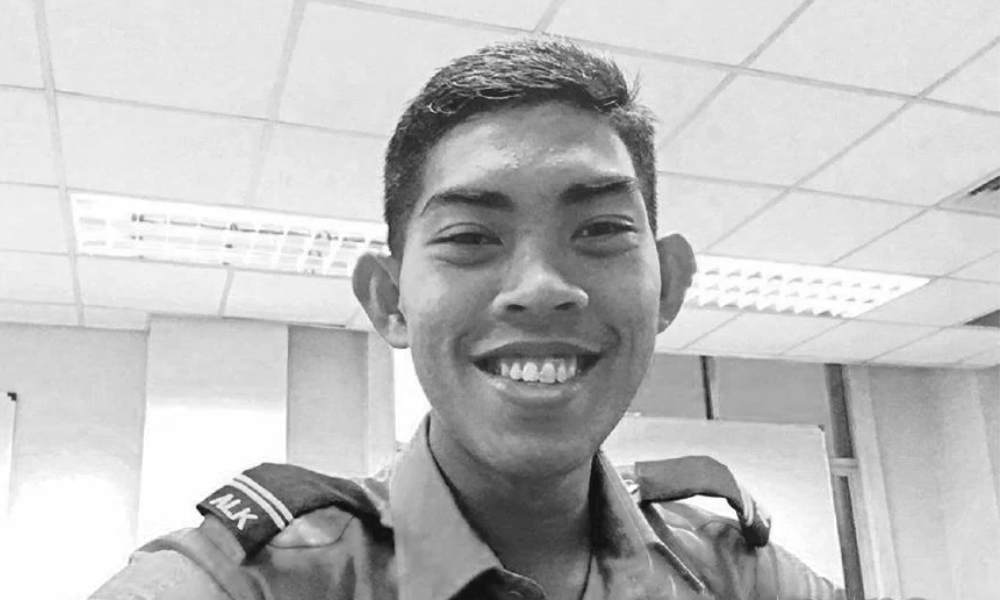What is justice? What is the correct retribution and punitive action that can be taken when a horrific crime has been committed?
I was left pondering this issue once again when news broke that six former Universiti Pertahanan Nasional Malaysia (UPNM) students were sentenced to death over the murder of navy cadet Zulfarhan Osman Zulkarnain seven years ago.
The Court of Appeal unanimously found the six ex-students guilty of murder, setting aside their initial conviction for the offence of causing death with no intent to kill, and ruled that the initial 18-year jail sentence was insufficient due to the viciousness of the crime.
I do agree with that part at least, as Zulfarhan died of injuries on June 1, 2017, from 90 instances of steam ironing, which left scalding burns on 80 percent of his body.
What kind of inhumane people can inflict such cruelty on their peers… what’s more a crowd of tormentors surrounding a single victim?
Mind you, 12 other students were convicted for lesser involvement in this crime in which Zulfarhan’s hands and feet were tied before he was subjected to multiple beatings by multiple attackers as well as the hot steam iron placed repeatedly on his back and private parts.

All over a laptop that was allegedly stolen.
But once again this begs the question… what is the correct punishment?
Firstly, I am strongly opposed to the death penalty, and the death penalty itself is in a curious state of limbo.
The death penalty is still on the books even though the Abolition of Mandatory Death Penalty Act 2023 came into effect on July 4 last year with several laws amended to remove the mandatory death penalty.
So people are still being handed the death penalty because it is still currently retained for 27 offences in Malaysia, even though the government imposed a moratorium on all executions in October 2018 while the last executions were carried out on May 24, 2017.
What is the right punishment?
Even as we maintain the push towards abolition, I do question what the correct punishment is. I always maintain that the state must be rational and not emotional and its duty is not to take lives but to preserve them.
Furthermore, a majority of the 900-plus people still on death row are there for drug-related crimes and they are often drug mules and addicts, not the kingpins.
In Malaysia, we have a justice system that has been rotten in the past and is not entirely spotless in the present, if you take prevailing sentiment on Deputy Prime Minister Ahmad Zahid Hamidi’s DNAA and former prime minister Najib Abdul Razak’s pardon attempt into account.
You can’t tell me that evidence-gathering in the past has not been compromised through planted evidence and forced confessions. But what about a case such as this, where there this little room for doubt about the guilt and identity of the perpetrators and the suffering and cruel fate of the victim?
I still believe that an eye for an eye is wrong and would make the whole world blind. I suppose life imprisonment without the possibility of parole or pardon is the correct sentence for such a heinous act.
Many such cases
While the death penalty is often characterised as providing justice and closure for family members of murder victims, a progressive state cannot be responsible for taking lives.
I am glad that Zulfarhan’s killers have been brought to book.
I was certainly left unhappy when five men, accused of the brutal murder of teenager T Nhaveen, also in June 2017, were acquitted and discharged by the High Court in Penang last October without their defence being called.

There was also the coroner’s return of an open verdict last year during the inquest to ascertain the cause of death of naval cadet J Soosaimanicckam.
He was a graduate cadet officer, who was pronounced dead at the Armed Forces Hospital in Lumut on May 19, 2018. This after allegedly being targeted by officers during his training at KD Sultan Idris Navy Base.
Let’s be honest, there are scores of well-publicised cases of death as a result of bullying, negligence, and torture. Probably thousands of little-known tragedies that slipped under the radar over the years.
Very rarely does the perpetrator answer for his or her crimes, particularly if the perpetrator is in law enforcement and the victim is a marginalised member of society, as is the case with many custodial deaths. In fact, I defy you to find me an example of a successful prosecution of such a case.
The truth is that no sentence, however stern or lenient, is going to bring any of these victims back, which leads me back to the original question… what does real justice look like? - Mkini
MARTIN VENGADESAN is an associate editor at Malaysiakini.




No comments:
Post a Comment
Note: Only a member of this blog may post a comment.